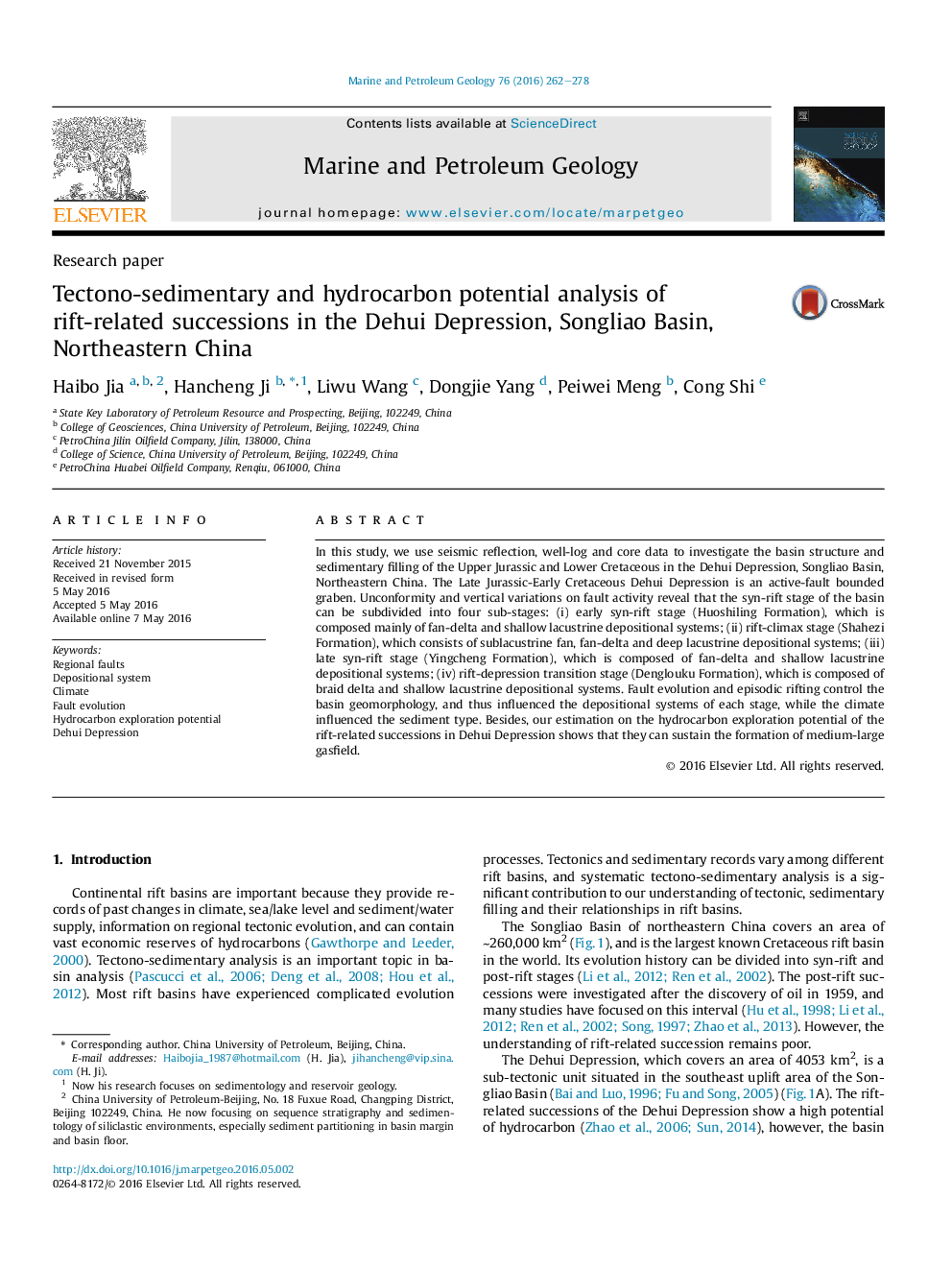| Article ID | Journal | Published Year | Pages | File Type |
|---|---|---|---|---|
| 6434736 | Marine and Petroleum Geology | 2016 | 17 Pages |
â¢The rift-related succession of Dehui Depression can be divided into four stages.â¢Each stage composed of distinctive depositional systems.â¢Evolution of boundary faults and episodic rifting controlled the depositional system.â¢The climate influenced the sediment type.
In this study, we use seismic reflection, well-log and core data to investigate the basin structure and sedimentary filling of the Upper Jurassic and Lower Cretaceous in the Dehui Depression, Songliao Basin, Northeastern China. The Late Jurassic-Early Cretaceous Dehui Depression is an active-fault bounded graben. Unconformity and vertical variations on fault activity reveal that the syn-rift stage of the basin can be subdivided into four sub-stages: (i) early syn-rift stage (Huoshiling Formation), which is composed mainly of fan-delta and shallow lacustrine depositional systems; (ii) rift-climax stage (Shahezi Formation), which consists of sublacustrine fan, fan-delta and deep lacustrine depositional systems; (iii) late syn-rift stage (Yingcheng Formation), which is composed of fan-delta and shallow lacustrine depositional systems; (iv) rift-depression transition stage (Denglouku Formation), which is composed of braid delta and shallow lacustrine depositional systems. Fault evolution and episodic rifting control the basin geomorphology, and thus influenced the depositional systems of each stage, while the climate influenced the sediment type. Besides, our estimation on the hydrocarbon exploration potential of the rift-related successions in Dehui Depression shows that they can sustain the formation of medium-large gasfield.
